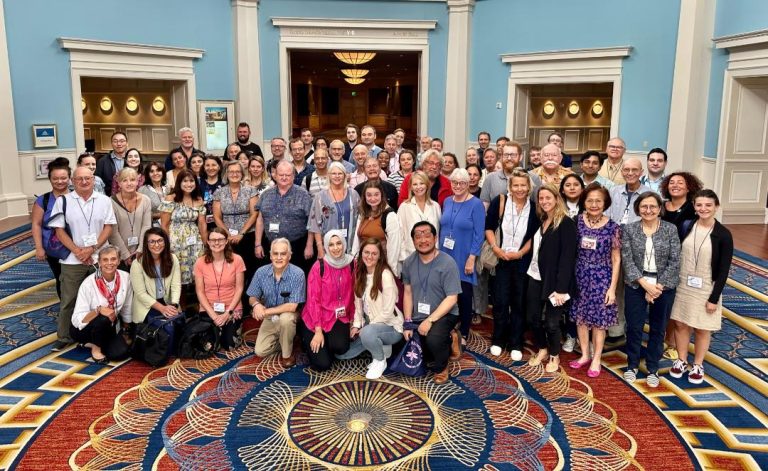2023 CCHS Science Conference Speaker Summaries
DISNEY WORLD BEACH CLUB RESORT ORLANDO, FL, SEPTEMBER 6-9.

Background: Respiratory drive is an unconscious central nervous system process. Contraction of the diaphragm and other respiratory muscles in the chest is initiated by spontaneously firing neurons in the brain stem. This signaling is a product of complicated interactions between CNS neurons based on sensory input of CO2, O2 and pH (H+). The neural control of breathing is still relatively a “black box” in systems-level physiology. While the major regions of the brain stem that are involved in respiratory drive are known, functions of the actual network components remain elusive. Research on CNS respiratory control is difficult because of the complexity of the neural networks and their anatomical locations. Today’s model is: (1) respiratory neurons in the brainstem control inspiration and expiration; (2) other neurons in the same region integrate sensory information to influence ventilation; (3) the rhythmic pattern of breathing arises from brainstem neural networks with some spontaneously discharging neurons; (4) ventilation is subject to continuous modulation by various chemosensitive and mechanoreceptor-linked reflexes. The retrotrapezoid nucleus (RTN) neurons have a specific lineage and are located near the ventral surface of the rostral brainstem and consist of a bilateral cluster of glutamatergic neurons (neurons that produce the neurotransmitter glutamate, the main excitatory neurotransmitter in the mammalian central nervous system) that are non-aminergic (they don’t release noradrenaline, dopamine, or serotonin at synapse) and express the homeodomain transcription factor, PHOX2B, throughout life. These neurons respond vigorously to increases in local pCO2. RTN neurons innervate the entire ventral respiratory group, suggesting that they target many types of respiratory neurons, including those in the pre-Bötzinger complex (a neural network responsible for inspiration during the respiratory cycle).
Limitations: All of this work is done in mouse models, so it is not clear how closely the human system mimics this model. It is inconclusive that humans even have RTN neurons.
Patrice Guyenet: The retrotrapezoid nucleus, lynchpin of CO2 homeostasis
Doug Bayliss: Molecular and cellular mechanisms for tonic activity, CO2 sensitivity and neuromodulation in PHOX2B-expressing neurons of the retrotrapezoid nucleus
Yingtang Shi: Molecular physiology of PHOX2B-expressing brainstem neurons
Dan Mulkey: Expression of an encephalopathy-associated Kcnq2 gain-of-function variant in PHOX2B+ neurons suppresses respiratory activity (He is only now starting to specifically study CCHS)
Isabella Ceccherini: Multiomics approach to identify possible PHOX2B genetic modifiers responsible for phenotypic variability in CCHS
Gad Vatine: Transcriptome analysis of patient-specific iPSC-based autonomic neurons
Diego Fornasari: New research strategies and novel potential therapeutic targets in Congenital Central Hypoventilation Syndrome
Silvia Pagliardini: Etonogestrel promotes respiratory recovery in a model of chemoreflex impairment
Javier Oroz: The structure of expanded PHOX2B reveals novel pathways for its malignancy in CCHS
Avi Ashkenazi: Regulation of proteostasis mechanisms by polyalanine expansion mutations in PHOX2B
Background: The first case of CCHS reported in the literature was in 1970. PHOX2B mutations were identified as the cause of CCHS in 2003. CCHS patients are treated with mechanical venitlation – in US mostly by trach and vent, but the EU uses more non-invasive techniques. Conditions associated with CCHS include Hirschsprung’s disease, cardiac asystoles, eye problems, neuroblasomas, endocrine abnormalities and inability to regulate temperature among others.
Treatment strategies in CCHS are four-pronged:
Keynote Speaker, Tom Keens: From Discovery to Advancements: Tracing the History of Congenital Central Hypoventilation Syndrome
Ajay Kasi: Atypical Presentations in NPARMS
The NPARM mutations of PHOX2B are generally associated with severe phenotypes requiring full-time assisted ventilation, Hirschsprung’s disease, and risk of neural crest tumors. However, recent studies have reported relatively milder phenotypes and atypical presentations in PHOX2B NPARMs including lack of hypoventilation. In this presentation, Dr. Kasi reviewed the atypical presentations and management of NPARM paitients by mean of a number of case histories
Yakov Sivan: Congenital Central Hypoventilation Syndrome in Israel – Novel Findings from a New National Center
Casey Rand: PHOX2B Mutation-Confirmed Congenital Central Hypoventilation Syndrome (CCHS): Validating Wireless Capture of Ambulatory Biomarkers for Clinical Trial Readiness
Nathan Beckouche/AtmosR: Drug screening discovery process for CCHS
James Oakley/KeepMeBreathing: Phrenic nerve pacemaker development with biofeedback
Other: Gordon Mitchel and Jan Rameriz
These two individuals spoke at the conference on aspects of breathing but are not studying CCHS directly.
Gordon Mitchell: In the translational flywheel: therapeutic acute intermittent hypoxia to improve breathing
Jan-Marina (Nino) Rameriz: The pathology of dysautonomia: Lessons learned from the clinic and basic neuroscience